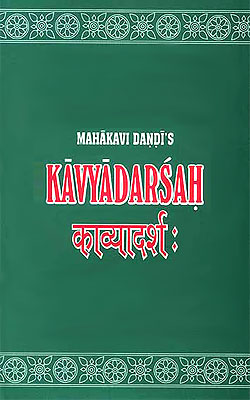 Dandin was well verse both in prose and poetry. He wrote mainly in Sanskrit Language. He lived in Kanchipuram. Kavyadarsa is the earliest existing systematic treatment of poetics in Sanskrit. It was influenced by Bhattikavya. In Kavyadarsa he argues that a poem`s beauty is derived from its use of rhetorical devices. He mentions thirty-six types of such devices.
Dandin was well verse both in prose and poetry. He wrote mainly in Sanskrit Language. He lived in Kanchipuram. Kavyadarsa is the earliest existing systematic treatment of poetics in Sanskrit. It was influenced by Bhattikavya. In Kavyadarsa he argues that a poem`s beauty is derived from its use of rhetorical devices. He mentions thirty-six types of such devices.
Dandin was the advocate of gunaprasthana. It means that the poetry needed qualities as shlesa, prasada, samata, madhurya, arthavyakti and ojah. He is known for his complex sentences and usage of long compound words. Kavyadarsa is a literary criticism also known as Mirror of poetry.
Dashakumaracharita speaks about the fluctuation of ten princes in their pursuit of love and royal power. It narrates stories of common life thereby reflecting a faithful picture of Indian society during the period. It consists of Purvapithika, Dasakumaracharita proper and Uttarapithika.
Kavyadarsa is mature work from him while most of the alleged errors in grammar are of the type which other poets permit themselves. The Dasakumaracharita was translated in 1927 as The Adventures of the Ten Princes.
Style of Dashakumaracharita
Here and there one can see traces that Dandin`s strain uses of language. He surpasses Subandhu by obeying the rule that the perfect shall only be used in describing what not part of one`s personal experience is. He uses imperfects, aorists, the historical present and participles, active and passive. This shows his familiarity with grammar.
He uses simple and easy narrative. In the speeches of his characters he avoids the error of elaboration of language. However in descriptions he exhibits his talent and command of the language thereby showing his adherence to the Vidarbha style. He also excels in pleasing sound effects. He uses exact expression and clearness of sense thereby avoiding harsh sounds and exaggeration. In this manner he attains beauty, harmony of sound and effective expression of sentiments. He makes free use of the right in prose in order to construct long compounds which are not difficult to understand. He varies his forms of description. Stereotype complimentary epithets are visible though. Simplicity and vividness of his style can be traced in his descriptions.



















